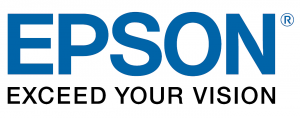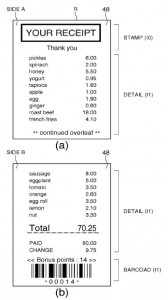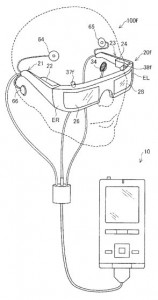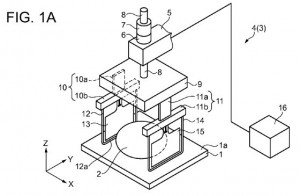 Headquartered in Nagano, Japan, the Seiko Epson Corporation is a worldwide leader in the manufacture of computer printers, imaging equipment and other information technologies. Well known for its printer products, Epson made some interesting announcements at the 2015 Consumer Electronics Show regarding a series of wearable gadgets for fitness tracking. Investment in printing technologies is still strong at Epson, which announced the purchase of Wisonsin-based K-Sun Corp., a developer of portable and desktop electronic label printers, during December of last year. Also in December, an Epson subsidiary had all claims asserted against it by Circuit City Stores dismissed from a lawsuit alleging price fixing for LCD products.
Headquartered in Nagano, Japan, the Seiko Epson Corporation is a worldwide leader in the manufacture of computer printers, imaging equipment and other information technologies. Well known for its printer products, Epson made some interesting announcements at the 2015 Consumer Electronics Show regarding a series of wearable gadgets for fitness tracking. Investment in printing technologies is still strong at Epson, which announced the purchase of Wisonsin-based K-Sun Corp., a developer of portable and desktop electronic label printers, during December of last year. Also in December, an Epson subsidiary had all claims asserted against it by Circuit City Stores dismissed from a lawsuit alleging price fixing for LCD products.
In our check-in with Epson’s patent applications filed with the U.S. Patent and Trademark Office, we were intrigued to see a number of innovations related to retail point-of-sale devices, including a double-sided printer for receipts. We explore a couple of patent applications related to robotics for manufacturing facilities. We also found development involving head-mounted displays reflected in another patent application that we discuss below.
Seiko Epson’s strong patent portfolio made some intriguing additions in recent weeks. We took a close look at a trio of patents related to printing technologies, including one designed to improve image quality that overcomes print head deterioration caused by age and use. Another patent protects an assembly line robot that is better capable of gripping soft items. We were also able to find a solar-powered wristwatch that can support a calendar ring for displaying the current date.
[Companies-1]
Epson’s Patent Applications: Point-of-Sale Innovations, Robots and Biological Information Detection
Since introducing the world’s first quartz wristwatch in 1969, Epson has been at the forefront of innovation in fields of high precision technologies, especially for the manufacture of printers and electronic components. At the beginning of January, this corporation announced a partnership with U.S.-based Touch Dynamic to develop a series of mobile point-of-sale (POS) services for retail and hospitality establishments. Epson also exhibited a line of POS solutions at the recent National Retail Federation Annual Convention and Expo, including systems for peripheral device control and tablet-based POS support. This company’s research and development investment into multimedia projectors that offer high-definition resolution are a big reason why those products were used as part of a $33 million Learning and Teaching Hub construction project at the University of the Sunshine Coast in Queensland, Australia.
We were able to find a couple of innovations related to various types of POS services being developed by Epson, especially those involved in the printing of receipts during a transaction. Techniques for adding marketing value to receipts which are printed for customers is discussed within U.S. Patent Application No. 20140362412, entitled Method of Adding Value to Print Data, a Value-Adding Device, and a Recording Medium. The value-adding method claimed by this patent application involves a data acquisition step where a computer acquires print data from an application as we ll as a data processing step during which the computer adds or deletes content from print data which is sent to a communication port. This system is capable of adding coupons, advertisements or logos based on information stored in system computers. An innovative receipt printer designed to reduce paper waste is at the center of U.S. Patent Application No. 20140333709, which is titled Double-Sided Receipt Printing Method and Double-Sided Receipt Printer. The patent application would protect a double-sided receipt printer with a conveyance unit for conveying receipt paper, two printheads for printing on either side of the receipt paper, a cutter configured to cut the paper after printing, a storage unit that stores a certain length of store information and a controller that controls transaction information printed by either printhead. This printer reduces paper wasted as white space at the leading edge of the receipt and provides double-sided printing without reversing the paper feed, which can cause jams.
ll as a data processing step during which the computer adds or deletes content from print data which is sent to a communication port. This system is capable of adding coupons, advertisements or logos based on information stored in system computers. An innovative receipt printer designed to reduce paper waste is at the center of U.S. Patent Application No. 20140333709, which is titled Double-Sided Receipt Printing Method and Double-Sided Receipt Printer. The patent application would protect a double-sided receipt printer with a conveyance unit for conveying receipt paper, two printheads for printing on either side of the receipt paper, a cutter configured to cut the paper after printing, a storage unit that stores a certain length of store information and a controller that controls transaction information printed by either printhead. This printer reduces paper wasted as white space at the leading edge of the receipt and provides double-sided printing without reversing the paper feed, which can cause jams.
We’ve noted a growing trend in developing robotics technologies through coverage published last year here on IPWatchdog and we noted a great number of patent applications filed by Epson in this sector as well. Systems for guiding robots around obstacles and preventing impacts which could cause damage to the robot or the object are explained within U.S. Patent Application No. 20140334714, titled Collision Detection System, Robotic System, Collision Detection Method and Program. The collision detection system that would be protected includes a processing section, a drawing section that performs a multiple drawing processes that test the depth map information stored by a depth buffer. The processor analyzes the results of the multiple drawing processes to detect a target object for collision avoidance. A lot of the robotics innovations we’ve seen pertain to robots for manufacturing activities, which is also the focus of U.S. Patent Application No. 20140371908, entitled Robot Controller, Simple Installation-Type Robot, and Method of Controlling Simple Installation-Type Robot. The patent application claims a robot controller that controls an operation of a robot mounted in a moving device; the controller includes a trial operation performing unit that allows the robot to perform a predetermined trial operation once the robot controller has been installed. The robot controller of this invention is capable of adjusting the operating speed of a robot mounted in a moving device to reduce the vibrational forces that can cause displacement in manufacturing robots during operation.
We were intrigued to note an Epson invention seeking to improve the accuracy of electronic devices used to monitor an individual’s vital signs that was outlined within U.S. Patent Application No. 20150005593, which is titled Biological Information Detector and Biological Information Measuring Device. The biological information detector of this invention includes a light emitting part, a first connecting pad connected to the light emitting part with a first bonding wire and a light transmission part covering both the light emitting part and the first bon ding wire. This measuring device is capable of higher accuracy when measuring a person’s pulse, body temperature and blood oxygen saturation levels by increasing the amount of light that reaches the detection site. The detection of biological information in persons who are wearing head-mounted electronic displays is another Epson innovation which we found in U.S. Patent Application No. 20150002373, entitled Head-Mount Type Display Device and Method of Controlling Head-Mount Type Display Device. The head-mount type display device that would be protected includes an image display device that allows a user to visually recognize an image when the device is being worn, a detection section that detects biological information of that user and an annunciation section that informs a user of information based on variations in the biological information detected. This innovation is designed to determine an open-close state of an eye and other autonomic nervous system information to protect users from overuse of the head-mounted display.
ding wire. This measuring device is capable of higher accuracy when measuring a person’s pulse, body temperature and blood oxygen saturation levels by increasing the amount of light that reaches the detection site. The detection of biological information in persons who are wearing head-mounted electronic displays is another Epson innovation which we found in U.S. Patent Application No. 20150002373, entitled Head-Mount Type Display Device and Method of Controlling Head-Mount Type Display Device. The head-mount type display device that would be protected includes an image display device that allows a user to visually recognize an image when the device is being worn, a detection section that detects biological information of that user and an annunciation section that informs a user of information based on variations in the biological information detected. This innovation is designed to determine an open-close state of an eye and other autonomic nervous system information to protect users from overuse of the head-mounted display.
Of course, a great many of Epson’s recent innovations were focused on improvements to its long lineup of printers. We took the time to explore one technology that reduces deterioration to liquid droplet recovery mechanisms in Epson printers that was featured within U.S. Patent Application No. 20140354731, filed under the title Mist Collection Device and Liquid Ejection Device. The liquid ejection device claimed includes an ejection head that ejects liquid from nozzles onto a print medium, a suction section with a slit-shaped opening, a collection part that collects mist generated while ejecting the liquid by separating mist from air sucked into the suction section and a suction device that generates an air flow from the suction section to the collection part. This innovative device improves mist collection by utilizing a collection system that does not incorporate a filter, which can become saturated with liquid ink droplets, reducing the suction force.
[Companies-2]
Issued Patents of Note: Plenty of Printer Inventions and a Robot for Gripping Soft Objects
Seiko Epson experiences a very respectable level of intellectual property development and has a strong IP portfolio thanks to both its patenting activities as well as partnerships reached with other major worldwide technology developers. The latest statistics from the Intellectual Property Owners Association placed Epson 19th overall among global patenting entities with 1,488 patents during 2013. In addition to the patents held by the corporation, Epson also benefits from patent licensing agreements in place with Hewlett-Packard, IBM, Microsoft, Canon and Texas Instruments, among others. In late December of last year, Epson filed a complaint with the U.S. International Trade Commission against 19 companies for alleged patent infringement related to inkjet printer cartridges.
During our latest survey of Epson’s patents we found a trio of technologies that showcase this company’s most recent developments in printing technologies. U.S. Patent No. 8922808, which is titled Electronic Device That Receives a Wait-For-Impact-Detection Command, discloses enhanced methods of detecting impacts in printers, especially in portable and touch-responsive printers, to improve smooth printing operations in response to ink replacement or other processes causing impacts. The patent claims a control method for an electronic device that involves receiving print data with a wait-for-impact-detection command, enabling a wait-for-impact-detection state in response to receiving the command wherein an executable predetermined process is suspended and a termination of the wait-for-impact-detection state when a predetermined impact is detected. A technology for the economical use of expensive glossy inks used in metallic color reproduction is the focus of U.S. Patent No. 8928945, which is titled Printing Apparatus, Method for Creating Lookup Table, Lookup Table, Printing Method, and Printed Matter. The printing apparatus claimed here performs printing with the use of a special gloss material and a coloring material; the apparatus includes an inputting section that acquires image data, a printing section that prints the image data and a control section that reduces the amount of gloss material that is applied at a predetermined highlight area. This innovation is compatible with many types of printers, including inkjet models. We were also interested in the system for reducing deterioration of image quality in aging printers discussed by U.S. Patent No. 8905506, entitled Liquid Ejecting Apparatus and Method of Controlling Liquid Ejecting Apparatus That Corrects for Aging of a Print Head. The patent protects a liquid ejecting apparatus that includes a liquid ejecting head with a nozzle group and a pressure generation unit that changes pressure inside a pressure chamber that causes the ejection of liquid from the nozzles, a driving waveform generation unit that drives the pressure generation unit, a control unit that controls liquid ejection and a counting unit that counts the cumulative number of times that the driving waveform is applied. This system is intended to improve upon conventional techniques of increasing the driving voltage to overcome image quality deterioration, which can further worsen the print head characteristics.
 Along with the robotics innovations we noted in Epson’s patent applications, we found an assortment of patents issued to the company in this sector. One of these was U.S. Patent No. 8899647, which is titled Robot Hand, Robot, and Control Method for the Robot Hand. It claims a robot hand having a plurality of bar-like placing sections where an object is placed, a number of pressing sections paired with the placing sections to press side surfaces of an object, a space adjusting section to adjust space between the placing and pressing sections and a detecting section that detects an angle of inclination between the placing and pressing sections. These components work together to enable a robot hand to grip an object during assembly work, especially when that object is soft.
Along with the robotics innovations we noted in Epson’s patent applications, we found an assortment of patents issued to the company in this sector. One of these was U.S. Patent No. 8899647, which is titled Robot Hand, Robot, and Control Method for the Robot Hand. It claims a robot hand having a plurality of bar-like placing sections where an object is placed, a number of pressing sections paired with the placing sections to press side surfaces of an object, a space adjusting section to adjust space between the placing and pressing sections and a detecting section that detects an angle of inclination between the placing and pressing sections. These components work together to enable a robot hand to grip an object during assembly work, especially when that object is soft.
Finally, we’ll close our look at Epson’s innovations with a couple of patents describing some novel electronics innovations developed by this manufacturer. An improved wristwatch which incorporates solar energy collection for driving the watch mechanism is disclosed and protected by U.S. Patent No. 8934332, issued under the title Electronic Timepiece With Solar Cell. The electronic timepiece protected here includes a solar cell with an insulating base material, a light-receiving unit disposed on a surface of the base material, a solar cell holding member attached to a different base material surface and a ring-shaped calendar wheel disposed between a light-transmissive character plate and a ground plate. This improved solar-powered wristwatch is capable of supporting a solar-powered calendar ring for displaying the date. We also noticed a medical innovation directed at improved systems for testing patient DNA described by U.S. Patent No. 8889405, which is titled Biochip and Target DNA Quantitative Method. This invention is intended to improve test accuracy over conventional systems that use fluorescent probes to assay and amplify nucleic acids. The patent claims a centrifugal device used for quantitative analysis of a target DNA contained in a sample that contains a holder configured to support a biochip, the biochip having a supply reservoir, a waste chamber, a first primer designed to bind to a target DNA and a first fluorescent probe that binds with a part of a polymerase chain reaction (PCR) of the target DNA.

![[IPWatchdog Logo]](https://ipwatchdog.com/wp-content/themes/IPWatchdog%20-%202023/assets/images/temp/logo-small@2x.png)

![[Advertisement]](https://ipwatchdog.com/wp-content/uploads/2024/04/Artificial-Intelligence-2024-REPLAY-sidebar-700x500-corrected.jpg)
![[Advertisement]](https://ipwatchdog.com/wp-content/uploads/2024/04/UnitedLex-May-2-2024-sidebar-700x500-1.jpg)
![[Advertisement]](https://ipwatchdog.com/wp-content/uploads/2024/04/Patent-Litigation-Masters-2024-sidebar-700x500-1.jpg)

![[Advertisement]](https://ipwatchdog.com/wp-content/uploads/2021/12/WEBINAR-336-x-280-px.png)
![[Advertisement]](https://ipwatchdog.com/wp-content/uploads/2021/12/2021-Patent-Practice-on-Demand-recorded-Feb-2021-336-x-280.jpg)
![[Advertisement]](https://ipwatchdog.com/wp-content/uploads/2021/12/Ad-4-The-Invent-Patent-System™.png)






Join the Discussion
No comments yet.